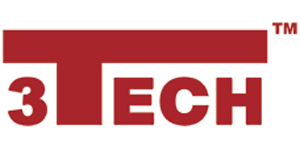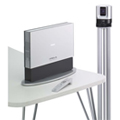PCS-G70
The Flagship Sony PCS-G70 - Quality Video Conferencing with the Utmost in Flexibility
Video conferencing systems continue to evolve as we enter a new era of visual communication. Sony is leading this evolution by staying ahead of the latest technological trends in video conferencing and developing systems that meet our customers' demands. The flagship Sony PCS-G70 video communication system is the latest solution to meet the needs of our high-end customers.
Video conferencing systems continue to evolve as we enter a new era of visual communication. Sony is leading this evolution by staying ahead of the latest technological trends in video conferencing and developing systems that meet our customers' demands. The flagship Sony PCS-G70 video communication system is the latest solution to meet the needs of our high-end customers.
The Sony PCS-G70 boasts a maximum video transfer rate of 4 Mb/s over an IP network, and it provides the highest resolution video of all models in the PCS Series. By adopting the H.263 video codec/4CIF format, the PCS-G70 produces image resolution comparable to that of standard TV broadcasts. The Sony PCS-G70 can also be used with the H.264 video codec for higher throughput and with previous versions of the ITU-T videoconferencing codecs to maintain compatibility with legacy systems.
As with other PCS Series models, the Sony PCS-G70, with its internal MCU (Multi-Control Unit) capability, supports simultaneous multi-point video conferences with six (6) endpoints, and a maximum of 10 endpoints when two PCS-G70 units are cascaded. The PCS-G70 bridges mixed calls between an ISDN network and an IP network, and speed matches (by connecting at the endpoint respective speeds) without lowering the performance of the entire system.
Other key features of the Sony PCS-G70 include a site-name display function, support for up to five monitors that display far-end sites in addition to the main monitor, and a dual-camera input, which can be used to provide more video coverage. The PCS-G70 also incorporates features such as data sharing, QoS support functions, an encryption function, and digital whiteboard support, which are all available in other PCS Series models.
As we enter a new era of visual communication, the feature-rich Sony PCS-G70 will meet user needs for high-end and large-venue videoconferencing applications.
- High-Quality Video/High-Speed Network Connection
The Sony PCS-G70 provides excellent picture quality over both ISDN (H.320) and IP (H.323) networks and fully supports the latest non-proprietary ITU-T H.264 video codec standard for maximum customer confidence and flexibility. When video encoding is in accordance with the H.263 protocol, the PCS-G70 supports the 4CIF format at a maximum frame rate of 30 fps, and when in H.264 protocol, it supports the interlaced SIF format at 60 fields per second. In addition, the Sony PCS-G70 can achieve a maximum bandwidth of 4 Mb/s with an IP connection, and up to 2 Mb/s with an ISDN connection using an optional PCSA-PRI ISDN unit. This combination of high-quality codec and high-speed network support provides video quality comparable to standard TV broadcasts. Moreover, in addition to the supplied PCSA-CG70 camera unit, the PCS-G70 supports a range of Sony camera options, including the BRC-300, which is a 16:9/4:3 switchable 3CCD camera providing exceptional quality video.
- Sony PCS-G70: Superb Sound
The Sony PCS-G70 reproduces clear and natural-sounding audio using MPEG-4 AAC (Advanced Audio Coding) at 14 KHz. A built-in echo cancellation system minimizes unwanted echoes during a videoconference. The Sony PCS-G70 is also compatible with a number of SONY external microphones and speakers, including directional and omnidirectional models. Professional A/V integrators will particularly appreciate the power and flexibility of this system to be customized for best application match. To ensure clear sound quality in meeting rooms with as many as 20 participants, the optional CTE-600 Communication Transducer is ideal. The CTE-600 is comprised of six radially arranged unidirectional microphones and one omnidirectional speaker. The system is designed to pick up the active speaker's voice while minimizing background noise, and to project clear sound quality in all directions.
- Multi-Point Video Conferencing at up to 10 Sites
Using optional MCU software, the Sony PCS-G70 can be configured to communicate with up to 5 remote video conferencing sites (6 sites total) simultaneously using either an IP (H.323 protocol) or ISDN (H.320 protocol) connection. It can also support video conferences in which the connections are a combination of IP and ISDN using a unique bridging function. And because the Sony PCS-G70 has a “speedmatching” function, it maximizes performance by not reducing the higher speed connection to match the lower speed connection, as is done with some videoconferencing systems. Moreover, two PCS-G70 units—each installed with the optional MCU (H.323) software—can be cascaded with an IP connection to support a maximum of 10 simultaneous sites. What is unique about the PCS-G70 is that it provides highquality, H.264 CIF video and clear MPEG-4 AAC audio, even in a multi-point videoconference. And of course, the PCS-G70 allows users to expand from a peer-to-peer video conference to a multi-point video conference by simply dialing up new connections.
- Sony PCS-G70: Multiple Display Output
In addition to the main monitor output, the Sony PCS-G70 can support up to five additional monitors that can be used to display the five other far-end sites in a 6-way video conference.
- Site-Name Display
During multi-point video conferences, it can be difficult to keep track of all of the participants; however, with the PCS-G70 site-name display function, this is no longer the case. The PCS-G70 can display anything from company or branch names to geographical locations on a monitor, allowing video conference participants to keep track of all parties. This function is available both on a single monitor in continuous-presence mode and on multiple monitors.
- Flexible Display Patterns at all Sites
In addition to conventional patterns of display - such as showing the far-end site on a full screen or displaying near-end and far-end sites in picture-inpicture mode—a variety of other display patterns are available with the PCS-G70. Supporting both 4-screen and 6-screen continuous-presence modes, the PCS-G70 can display the most appropriate pattern to match the number of sites that are connected. In both full-screen and continuous-presence modes, the following two display options are available:
Voice Switching:
The Sony PCS-G70 defaults to voice switching, which displays the far-end site that is actively talking on the monitor when the unit is in full-screen mode. In continuous-presence mode, the site that is actively speaking is displayed on the largest of the six sub screens, and the near-end site is displayed on the sub screen where the original far-end site was.
Fixed Site:
As its name suggests, the selected far-end site is continuously displayed on the monitor when the unit is in full-screen mode. In continuous-presence mode the selected far-end site is displayed in the largest of the six sub screens, and the other sites are fixed as well.
- Dual Camera and Split Picture Support (H.239 Dual Stream)
The Sony PCS-G70 can be configured with two cameras, which is ideal for covering large conference rooms or for capturing video of a specific area of interest during a videoconference. Video data from each camera can be sent as separate streams and displayed on dual monitors, or the data can be combined to form a single stream and viewed on a single monitor.
- Data-Sharing Capabilities/Digital Whiteboard Support
Data originated on your PC can be shared with your video conferencing counterparts, making communication even more effective. Any image that can be displayed on a PC can be sent or received in native XGA resolution, allowing all parties to share data during a video conference. In addition, information drawn up on a digital whiteboard can also be viewed in real time by all parties participating in a video conference or captured and stored for later reference.
- Easy-to-Use Remote Commander Unit/Intuitive GUI
The Sony PCS-G70 has a number of features that make it easy to operate. The cursor keys on the Remote Commander unit can be used to select and call any one of three contacts, which are pre-programmed and displayed in the Launcher Menu. Up to 500 contacts can be stored in the Sony PCS-G70 common address book for quick and easy dialing. In addition, the unit supports a call history log, which stores the last 32 incoming and outgoing calls so that the user can readily select and dial a recent contact.
- Memory Stick Support
Private phone books can be created and stored on Memory Stick media. By simply inserting the Memory Stick media into the Sony PCS-G70, the unit automatically recognizes and activates the private phone book, thereby eliminating the need to re-enter contact information to place a call. Memory Stick media has a number of other uses, such as storing captured images, PC-generated data, and digital whiteboard drawings. The media can also be used for installing and updating software.
- Secure Video Conferencing - Advanced Encryption Standard (AES)
Secure videoconferencing over a network is possible because the Sony PCS-G70 supports AES Encryption, a NIST (National Institute of Standards and Technology) standard for encrypting electronic data used in commercial applications including telecommunications. When a video conference is initiated with the AES feature active, video, audio, and graphics are encrypted for the duration of the videoconference. Because of this feature, companies can hold sensitive meetings, negotiations, and other similar interactions with confidence that they will not be compromised.
- QoS (Quality of Service) Enhancement Functions
When holding a video conference over a network, a common concern is how to maintain video and audio quality when the performance of the network is changing. The Sony PCS-G70 provides three advanced functions to enhance QoS over a network:
Forward Error Correction (FEC): The PCS-G70 employs an FEC function that corrects errors in transmission at the receiving end. If a transmission error occurs, the PCS-G70 can repair the data and accurately reproduce the original audio and video.
Adaptive Rate Control (ARC): The adaptive rate control function automatically varies the video data transfer rate to meet changing network conditions. It also selects the most appropriate frame rates, which helps prevent audio and video breakup.
Auto Repeat Request (ARQ): The ARQ function recovers lost IP packets. This is achieved by buffering the packets at the encoder and resending any that are lost. This feature helps maintain audio and video quality, and helps prevent picture collapse even under high network traffic conditions.
Brochure

